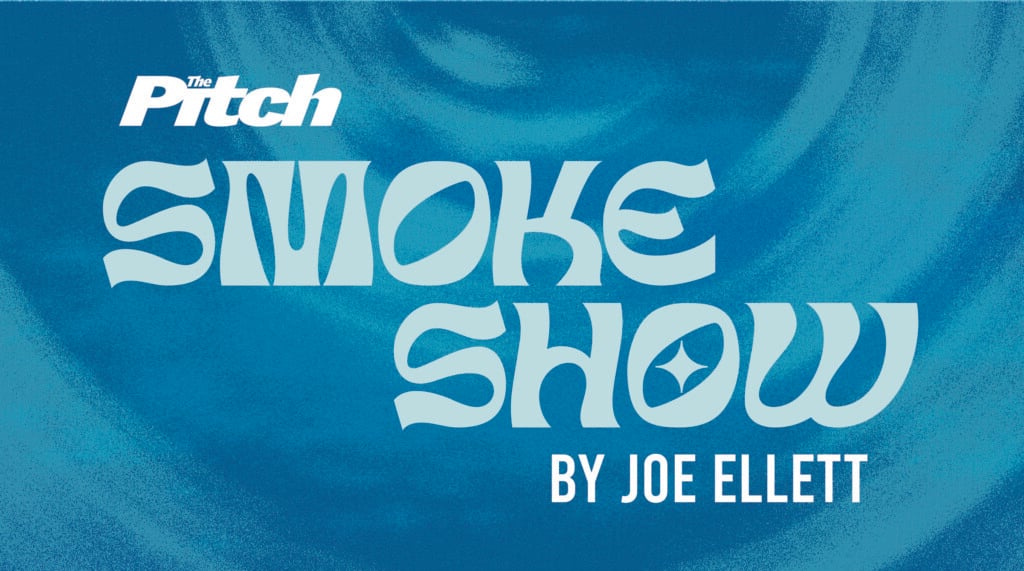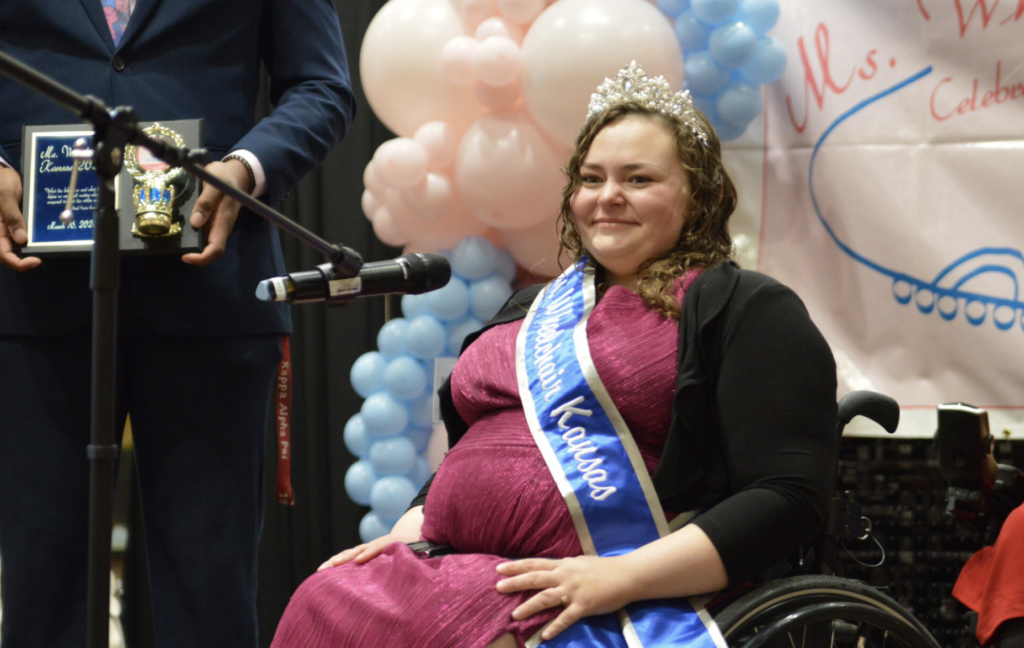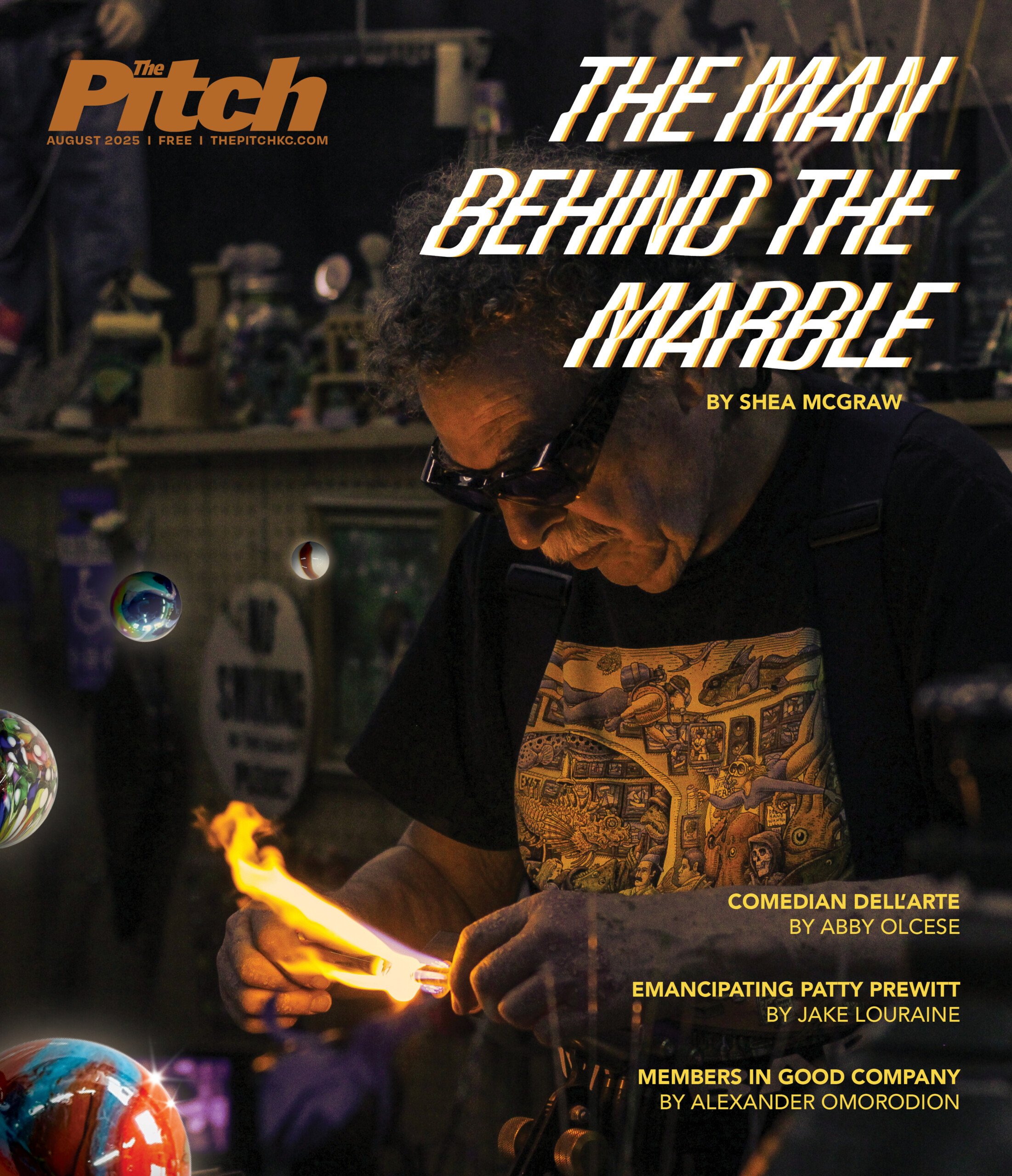The next bullet point in local college recruiting pamphlets: a campus streetcar
From Salt Lake City to Kansas City, long-isolated schools are starting to include trolleys and light rail as part of their asset packages.

A bust of Polish composer Roman Maciejewski sits in front of a tram stop on the campus of the Poznań University of Economics and Business in Poznań, Poland on the 23rd of March, 2024. While European centers of higher learning have long used charming transit as part of their allure, American universities are beginning to catch up, with even schools in mid-sized metro areas increasingly being able to boast of a campus streetcar. // Photo by Patrick Maynard
Kansas City may have some catching up to do.
Poznań, Poland’s fifth-largest municipality, like KC, has around a half million residents. But the Polish city boasts a whopping 20 tram lines, serving roughly 40 miles of routes, including virtually every place frequented by the city’s 140,000 higher education students. Filip Pietrowicz—a staffer at the city’s music conservatory Akademia Muzyczna—calls the trams, some of which would be labeled as streetcars in the U.S., while others would be considered light rail, “crucial” in students’ lives.
Even if Missouri’s largest city isn’t going to be unseating Poznań any time soon as a mecca for transit-happy college-goers, a currently in-progress extension of the lone KC Streetcar line, south from its current terminus to the University of Missouri, Kansas City is a first step. And perhaps more importantly for those nervously monitoring climate change, the move is part of a wider trend in American higher education: The birth of the campus streetcar as a competitive edge in recruitment, even for places not served by rail transit in the latter half of the 20th century.
One example can be found at the University of Utah, where the University Line was built around the turn of the millennium and has been growing since.
“Students, staff, and faculty use the light rail line, primarily for commuting to and from campus,” Associate Vice President of Auxiliary Services at the University of Utah Jennifer Reed says.
“Additionally, visitors to campus, particularly when we have large events like a Utah Football game at Rice-Eccles Stadium or a Utah Gymnastics meet at the Jon M. Huntsman Center, use TRAX because it can be much more convenient than parking a car on campus. Patients to our hospital and health care clinics also often use TRAX to get to their appointments.”
While Salt Lake City—where the University of Utah is located—has an outsized global role as the center of the Church of Jesus Christ of Latter-Day Saints, the city’s population is only around 200,000—hardly the type of place where heavy rail lines were built in the ’50s, ’60s, and ’70s, which was a boomtime of American subway construction in large metro areas.
Policy shifts on the federal level, however, have made light rail more popular with cities building transit in recent decades, and while this creates frustration on the part of subway advocates in large metro areas like Los Angeles—which has a rail transit system mainly cobbled together from surface lines—it has had benefits for university students in places that wouldn’t normally be served by heavy rail.
“Salt Lake City is like a miniature city, and I think that anything bigger than the light rail we have now would be costly and inefficient,” argues University of Utah junior Stevie Shaughnessey who says light rail serves multiple stops on campus, allowing her to get to athletic events more conveniently than she could if she was searching for parking in her car on game nights.
“The light rail gets people places quickly and efficiently.”

Riders wait for a streetcar on the campus of the Poznań University of Economics and Business in Poznań, Poland on the 23rd of March, 2024. // Photo by Patrick Maynard
Resurrecting a Legacy
In Kansas City, a medium-sized, but by no means enormous metro area, the extension of the streetcar is a return to an old tradition.
With the Kansas City Public Service Company operating cars in both Missouri and Kansas at midcentury, according to materials from the Market Street Railway historical organization, the metro area was once home to 25 lines—five more than even Poznań now boasts.
Underinvestment and lethargy in the expansion of the rail system, however, combined with heavy advertising by the auto industry, led buses to feel more attractive to suburbanites nationwide, who simultaneously moved toward using autos made affordable by postwar liquidity. Like the withering of public transit, that liquidity, researchers have since shown, has often tended to be used as a cudgel to hurt cities and their residents of color, whether in the form of redlining or uneven approval of auto loans.
While the intense, intentional neglect of streetcars shown in other metro areas—sometimes involving buy-ups of rail by companies that had a direct interest in selling cars, buses, and tires—was not a direct factor in the Kansas City system’s decline, the nationwide trend immediately after World War II, nudged along by the companies, was clear: Buses were taking over, and trolleys were on their way out. The last Kansas City streetcar ceased operating in 1957.
More recently, that trend has begun to reverse itself. Buses are no longer considered promising, and even enhanced proposals labeled as “bus rapid transit” (BRT) are regularly viewed with skepticism. That’s thanks partially to a phenomenon known as BRT creep, in which BRT systems’ positive attributes—level boarding, articulated vehicles, 5-minute frequencies, etc.—are whittled away until so-called BRT lines end up being just regular, unreliable bus routes with different branding.
While BRT creep has been frustrating for BRT advocates, it’s sometimes been a blessing in disguise for those pushing for surface rail in place of buses, along with the school administrators lucky enough to have streetcar access, who can now count even the Motor City itself as a place where students can take a surface rail line to campus.
“I think having a fixed rail system demonstrates that the Motor City is serious about improving its public infrastructure,” Vice President for Economic Development for the Detroit Institution Wayne State University Ned Staebler says.
“We’re augmenting it with a variety of express buses along key routes, but fixed rail is a powerful statement to residents, businesses, and investors that the City is committed to providing high-quality transit options.”
The university has extensive marketing materials aimed at selling students on the idea of using the QLINE streetcar, which bisects the WSU campus, along with related transit options. Students get access to the system for free.
Connecting the Dots
At other universities, a campus streetcar can be more of a link to existing heavy rail. In College Park, Maryland, there is already a heavy rail station connected to the Metro system of Washington, DC, but it is a relatively long walk from the campus of the University of Maryland, College Park (UMCP)—the state’s flagship public institution—meaning that campus residents have often been pushed toward automobile transportation.
As students who spent even their early childhoods with massive climate protests on the news begin to look at college options, however, schools like UMCP are starting to realize that any sustainability initiatives must include transportation if they are to be taken seriously. The new Maryland Purple Line light rail route, which is currently under construction, will have five stops on or adjacent to campus, connecting students to the existing metro station, along with newly available destinations to the west of campus.
The Purple Line does not enter DC itself, instead connecting several suburban locations with existing transit. The university has set up a portal of information about the line, touting the advantages of the planned route.
“The Purple Line is a key component of the Greater College Park initiative, a $2 billion public-private partnership with the City of College Park that aims to place the community among the nation’s top college towns,” Rebecca Aloisi of UMCP says.
That type of amenity is increasingly being appreciated for its drawing power by universities that have already seen diminishing returns from perks, such as climbing walls and single-occupancy dorm rooms. While no university has yet funded a rail line outright, schools and their foundations are increasingly putting money and other resources into pushing for better rail transit.
Large schools that have gained light rail or streetcar access in recent years include the University of Washington, the University of Minnesota, Rice University, Arizona State University, the University of Arizona, and Georgia State University.
In addition to being an asset that still has some novelty appeal, one administrator argues, the perk of a streetcar line has an extra advantage: It’s vital infrastructure, even for people outside of the campus.
“No one ever says, ‘I’m looking for a house where the roof doesn’t leak and the foundation is solid.’ Those things are just taken for granted. Transit is a little like that. If you don’t have it, it’s a problem, but it’s typically not something people are expressly looking for,” Staebler says.
“But, for a place like Detroit without a recent history of effective regional transit, [having the QLINE streetcar go through campus] is a very important step.”
At a time when student loan schemes are being criticized for funding resort-style baubles like lazy rivers, that kind of dual role for rail routes—campus perk and, simultaneously, vital civic infrastructure—can make universities’ surface rail transit an easier sell than some of the other amenities that attract out-of-state students, advocates argue.
For his part, Jonathan Gallimore—a Senior Lecturer at the University of Wisconsin-Madison—states that entities like universities, businesses, and state governments could have more influence in the way that transit functions in university areas.
“I am worried Madison is falling behind other cities,” he says. “I grew up in Salt Lake City, Utah and we were always ‘behind’ other states when it came to things like policies, trends, and public transportation.”
He says that dynamic has now been reversed, with Salt Lake City several steps ahead of the home of the UW system’s flagship campus. Salt Lake City has around 70,000 fewer residents in the city proper than Madison, which has a population of around 270,000 residents, according to the 2020 U.S. census.
Meanwhile, the KC Streetcar Authority in Missouri’s largest city is not standing still, kicking off a second extension at the other end of the line in March. That second project will take riders from downtown Kansas City to Berkley Riverfront Park. Project managers are hoping that the extension will be finished in time for the city’s role in the 2026 FIFA World Cup, according to reporting by the local NBC station. A second line, serving destinations along an east-west corridor, is also in the early stages of planning.
As for the UMKC extension, it is slated to open in 2025, according to a UMKC spokesperson. Taken together, the two ongoing extensions to the original line will triple the length of the route, with the purchase of eight new vehicles, more than doubling the size of the fleet. A November 2023 post about the line from UMKC’s press office stated that the construction of the extension to the school was “84% complete,” though the progress toward full passenger service on the UMKC extension will have to wait for testing and other logistical steps to be finished.
Whenever the KC Streetcar extension to UMKC starts operating, it won’t turn the metro into these other cities overnight, but in connecting the city’s largest university to its downtown core and a major event venue via rail, it brings a national trend to yet another campus, taking Kansas City students one step closer to what backers hope will eventually be a full system for getting around by rail.
Until then, they’ll always have Poznań.
Patrick Maynard’s freelance storytelling has appeared in more than a dozen publications, including St. Louis Magazine, VICE, and The Independent. He wrote about rail transit and universities for The Pitch from Poznań and Berlin.






